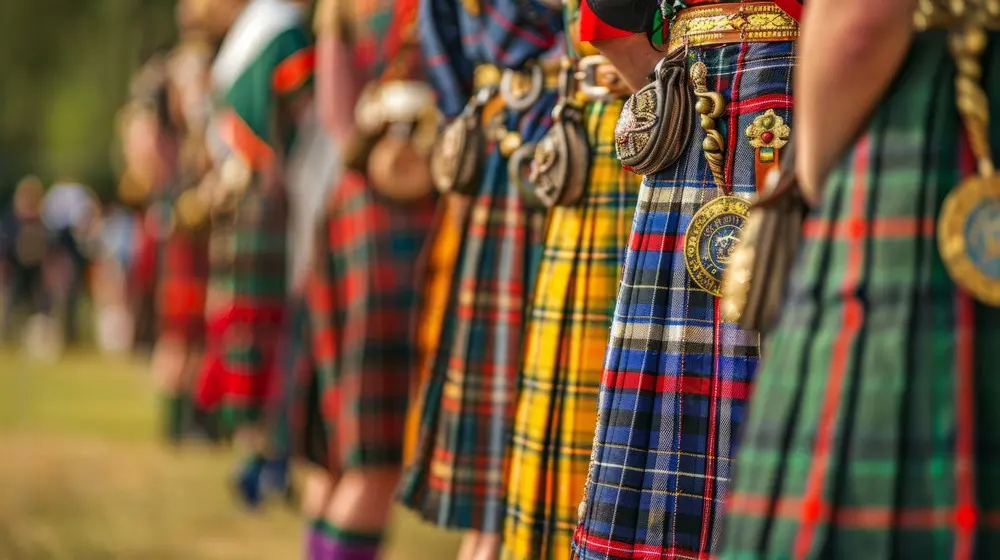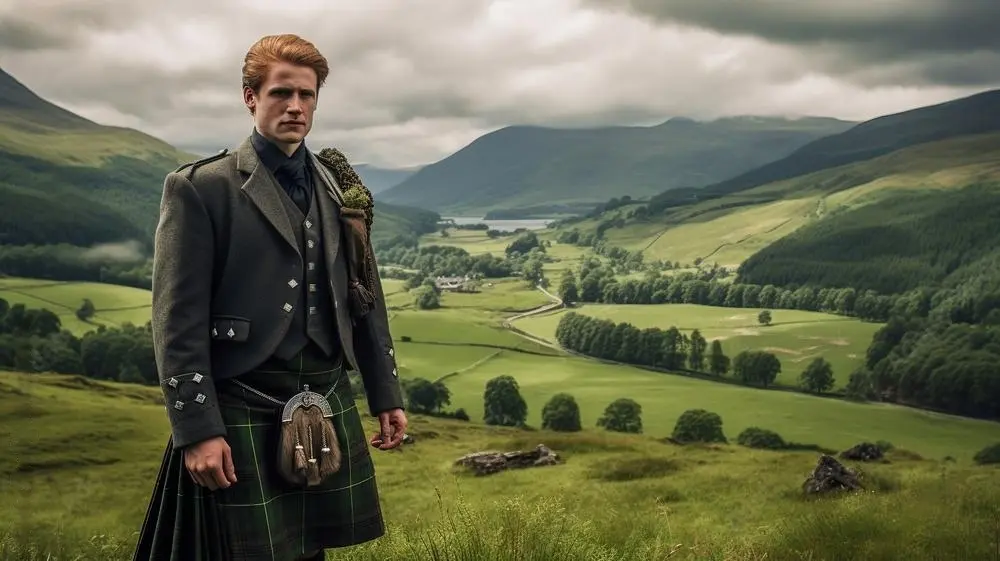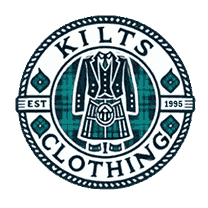Kilt vs Skirt: A Comprehensive Comparison

When it comes to traditional clothing with rich histories and cultural significance, both mens kilt and skirts stand out. While they may seem similar at a glance, kilts and skirts have distinct characteristics that set them apart.
This article delves into their origins, cultural importance, design differences, and modern-day uses, providing a thorough comparison to help you understand each garment better.
What is a Kilt?
A men kilt is a knee-length garment with pleats at the back, originating from Scotland. Traditionally made from woolen fabric, often in a tartan pattern, kilts are an essential part of Scottish heritage. Modern kilt for men come in various styles and materials, catering to both traditional and contemporary fashion. Men's kilts, or kilts for men, have evolved from the traditional Scottish kilt to more modern variations like the utility kilt and sport kilt.
What is a Skirt?
A skirt is a versatile piece of clothing worn from the waist down, available in countless styles, lengths, and fabrics. Historically, skirts have been a staple in women's wardrobes across many cultures.
Today, skirts are worn by all genders, reflecting a broad spectrum of fashion trends and cultural influences. The distinction between a kilt and a skirt often hinges on cultural context and design specifics.
Historical Background
Kilts trace back to the 16th century in Scotland, where they evolved from the 'great kilt' (a full-body garment) to the 'small kilt' or 'walking kilt' known today. The traditional Scottish kilt has deep roots in clan culture, with specific tartan patterns representing different families.
Irish kilts, while similar in appearance, have their own unique history and significance. On the other hand, skirts have an even older history, with variations worn in ancient civilizations such as Egypt, Greece, and Rome. Over the centuries, skirts have transformed to reflect changing fashion and social norms.
Cultural Significance
Kilts are deeply embedded in Scottish culture, symbolizing national pride and heritage. They are often worn during traditional ceremonies, Highland games, and other cultural events.
The question "Do the Irish wear kilts?" often arises, with the answer being yes, particularly for formal occasions and cultural celebrations. Skirts carry diverse cultural meanings worldwide, from symbols of femininity to traditional garments in various societies.
Design and Structure
Kilts are distinct in their pleated design, typically with pleats sewn at the back and a flat front. They are usually knee-length and made from heavy wool. Skirts vary widely in design, including A-line, pencil, maxi, and mini styles.
They can be made from numerous fabrics such as cotton, silk, denim, and more. Understanding the difference between a kilt and a skirt often comes down to examining these design elements.
Materials Used
Kilts are traditionally made from tartan wool, but modern kilts can also use lighter fabrics like cotton or synthetic blends. For instance, sport kilts are designed with activity-friendly materials for comfort and durability.
Skirts are crafted from a diverse array of materials, including cotton, polyester, silk, wool, and leather, depending on the style and occasion.
Gender Associations
Historically, kilts have been associated with men, particularly in Scottish culture. However, contemporary fashion sees kilts being embraced by all genders. Women can also wear kilts, often styled as female kilts or in a way that blends traditional and modern elements.
Skirts have traditionally been linked with women's fashion, though modern trends increasingly see skirts worn by people of all genders, challenging outdated stereotypes.
Occasions for Wearing
Kilts are often reserved for formal occasions, cultural celebrations, and events requiring traditional attire. However, casual kilts are also popular for everyday wear.
Wedding kilts are a prime example of formal kilts worn for special ceremonies. Skirts are suitable for a wide range of settings, from casual outings to formal events, with styles available to suit any occasion.
Fashion and Style
In modern fashion, kilts have found a place in streetwear and high fashion, with designers experimenting with materials and styles. Celebrities and fashion icons frequently showcase kilts on runways and red carpets.
Skirts remain a fashion staple, continually evolving with new designs, patterns, and trends influenced by fashion houses and influencers. The versatility of kilts and skirts allows them to adapt to various fashion narratives.
Comfort and Practicality
Mens Kilt offer comfort and freedom of movement, making them practical for activities like dancing and hiking. Skirts vary in comfort depending on the style and fabric, with options available for any activity level and personal preference.
Sport kilts are particularly noted for their practicality in active settings. Men wearing kilts often appreciate the garment's combination of style and ease of movement.

How to Wear a Kilt
Wearing a kilt involves wrapping it around the waist and securing it with straps or buckles. Traditionally, kilts are paired with specific accessories like sporrans, belts, and kilt pins.
Modern styling allows for more flexibility, including casual and alternative looks. Learning how to dress a kilt and understanding kilt pin placement are essential aspects of wearing this traditional garment.
How to Wear a Skirt
Skirts can be styled in countless ways, from casual pairings with t-shirts and sneakers to formal ensembles with blouses and heels. The key is choosing the right length and fit for your body type and occasion. Wearing a skirt, much like a kilt, involves selecting appropriate accessories and complementary clothing pieces.
Popular Myths and Misconceptions
Common myths include the belief that kilts are exclusively Scottish and only for men. Similarly, skirts are often mistakenly viewed as solely women's clothing. Both garments have broader cultural and gender associations than commonly perceived. For example, the question "Are kilts Irish?" reveals the broader historical use of kilts beyond Scotland.
Kilts in Popular Culture
Kilts have been prominently featured in movies like "Braveheart" and "Outlander," showcasing their cultural significance. Celebrities like Sean Connery and Ewan McGregor have famously worn kilts, further popularizing them. The kilt's representation in media highlights its enduring appeal and cultural resonance.
Skirts in Popular Culture
Iconic skirts include Marilyn Monroe's white dress in "The Seven Year Itch" and the miniskirts of the 1960s fashion revolution. Skirts continue to be a symbol of style and femininity in media and fashion. The portrayal of skirts in popular culture underscores their versatility and timeless charm.
Buying Guide for Kilts
When purchasing a kilt, consider factors like material, fit, and purpose. Authentic tartan kilts are often pricier but offer superior quality and cultural authenticity.
Many online retailers and specialty stores offer a range of options to suit different budgets and needs. Knowing how to size a kilt and understanding the various kilt accessories can enhance your buying experience.
Buying Guide for Skirts
Choosing a skirt involves considering style, length, material, and occasion. From high-end boutiques to fast fashion outlets, skirts are available in a wide range of prices. Ensure the fit complements your body shape for the best look and comfort. The diverse options available make it easy to find the perfect skirt for any wardrobe.
Caring for Your Kilt
Proper care includes dry cleaning, gentle brushing, and storing in a cool, dry place. Avoid folding your kilt for extended periods to prevent creases and maintain its pleated structure. Understanding how to wash a kilt and maintain its fabric is crucial for preserving its quality.
Caring for Your Skirt
Care instructions vary by fabric. Generally, machine wash or dry clean as appropriate, and iron on the correct setting to maintain the skirt's appearance. Store skirts on hangers to avoid wrinkles and creases. Proper care ensures your skirt remains in excellent condition for years.
Environmental Impact

Cultural Significance
- Scottish Heritage: Kilts symbolize pride, tradition, and identity. Wearing a kilt connects you to Scottish culture.
- Irish Kilts Often feature solid colours or specific tartan patterns, reflecting Irish culture. Irish kilts are worn during cultural celebrations.
- Wearing Kilts: Connects individuals to their ancestry and cultural roots. Kilts are a proud symbol of heritage.
Modern Trends
- Casual Kilts: Lightweight and comfortable for everyday wear. Casual kilts are perfect for relaxed settings.
- Utility Kilts: Functional with pockets and durable materials. Utility kilts are practical for a variety of activities.
- Fashion Kilts: Incorporate modern designs and fabrics. Fashion kilts offer a contemporary twist on a traditional garment.
Celebrity Influence
- Ewan McGregor: Often seen wearing a kilt, celebrating his Scottish heritage. McGregor's kilt outfits have been widely admired.
- Gerard Butler: Wears kilts at premieres and events, promoting Scottish culture. Butler's kilt appearances have boosted their popularity.
- Sam Heughan: Known for his role in "Outlander," he often wears kilts in and out of character. Heughan's kilt-wearing has influenced many fans.
Kilt Accessories: Completing the Look
- Kilt Belt: Essential for securing the kilt. Kilt belts are typically wider and more ornate than regular belts.
- Sporran: Functional and decorative pouch. Sporans come in various styles, including day, semi-dress, and dress sporrans.
- Kilt Pin: Adds elegance and keeps the apron in place. Kilt pins are often decorative and feature traditional designs.
- Ghillie Brogues: Traditional shoes that complete the outfit. Ghillie brogues are known for their distinctive lacing.
- Kilt Socks and Flashes: Provide color and hold up the socks. Flashes are small garters that add colour to the kilt outfit.
- Kilt Jacket and Waistcoat: Necessary for formal attire. The Prince Charlie jacket is a popular choice for formal events.
Kilt Patterns: Choosing the Right Tartan
- Traditional Tartans: Represent family or clan heritage. Choosing a traditional tartan connects you to your ancestry.
- Modern Patterns: Offer contemporary designs for a unique look. Modern tartans are great for those looking for something different.
- Custom Options: Tailored patterns for personal significance. Custom tartans allow for unique and personal designs.
Who Wears Kilts?
- Men: Traditionally worn by men for formal and cultural occasions. Men's kilts are often worn during significant events.
- Women: Increasingly worn by women in modern fashion. Female kilts are becoming popular in various fashion circles.
- Celebrities: Popularized by celebrities at events and in media. Celebrities have played a significant role in bringing kilts into mainstream fashion.
Conclusion
The formal kilt is more than just a garment; it symbolizes tradition, elegance, and cultural pride. Whether you're attending a wedding or a formal event or celebrating your heritage, wearing a kilt connects you to a rich history and showcases a timeless style. Invest in a quality kilt, learn how to wear it correctly, and embrace the unique charm it brings to any occasion.
FAQs
A formal kilt is a refined version of the traditional Scottish kilt, typically made of high-quality wool and worn for weddings, black-tie events, and other formal occasions. It includes accessories like a kilt jacket, sporran, and kilt pin.
Yes, a kilt is suitable for formal events such as weddings and black-tie occasions. It should be paired with appropriate accessories like a kilt jacket and sporran to complete the formal look.
Yes, wearing a belt with a formal kilt is customary. The belt not only secures the kilt but also adds a decorative element, often featuring an ornate buckle.
A casual kilt is usually lighter and made from materials like cotton or polyester for everyday wear, while a traditional kilt is made of wool with tartan patterns and is often reserved for formal or cultural occasions.
A kilt is a traditional Scottish garment, while tartan refers to the patterned fabric used to make kilts. Tartan patterns can represent specific clans, regions, or organizations.
Yes, you typically tuck a shirt into a kilt to maintain a neat and polished appearance. This is especially important for formal events where a smart presentation is required.


